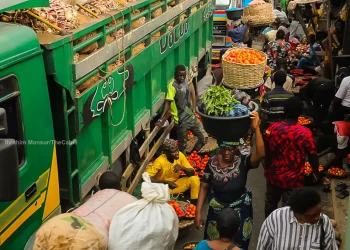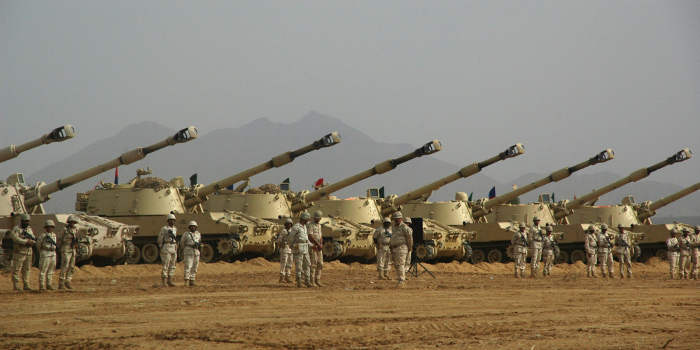The National Bureau of Statistics (NBS), says Nigeria’s headline inflation rate increased to 21.47 per cent on a year-on-year basis in November 2022.
This is according to the NBS Consumer Price Index (CPI) and Inflation Report for November 2022 released in Abuja on Thursday.
According to the report, the figure is 6.07 per cent points higher compared to the 15.40 per cent recorded in November 2021.
“This means that in November 2022, the general price level was 6.07 per cent higher relative to November 2021.’’
According to the report, factors responsible for the increase in the annual inflation rate were an increase in import cost due to the persistent currency depreciation and a general increase in the cost of production such as the increase in energy cost.
The report said on a month-on-month basis, the Headline inflation rate in November 2022 was 1.39 per cent, which was 0.15 per cent higher than the rate recorded in October 2022 at 1.24 per cent.
” This means that in November 2022, the general price level was 0.15 per cent higher relative to October 2022.
According to the report, the likely factor responsible for the increase in the monthly inflation rate can be attributed to the sharp increase in demand usually experienced during the festive season.
The report said the percentage change in the average CPI for the 12 months ending November 2022 over the average of the CPI for the previous 12 months period was 18.37 per cent.
“This indicates a 1.39 per cent increase compared to the 16.98 per cent recorded in November 2021.’’
It said increases were recorded in all Classification of Individual Consumption by Purpose (COICOP) divisions that yielded the headline index.
The report said the food inflation rate in November 2022 was 24.13 per cent on a year-on-year basis, which was 6.92 per cent higher compared to the rate recorded in November 2021 at 17.21 per cent.
“The rise in food inflation is caused by increases in prices of bread and cereals, food products, potatoes, yams and other tubers, and oil and fat.’’
It said on a month-on-month basis, the food inflation rate in November was 1.40 per cent, which was a 0.17 per cent rise compared to the rate recorded in October 2022 at 1.23 per cent.
According to the report, the increase was attributed to a rise in prices of some food items like oil and fat, fruit, fish, and tubers.
“The average annual rate of food inflation for the 12 months ending November
2022 was 20.41 per cent, which was a 0.21 per cent points decline from the average annual rate of change recorded in November 2021 20.62 per cent.
The report said the “All items less farm produce’’ or Core inflation, which excludes the prices of volatile agricultural produce stood at 18.24 per cent in November 2022 on a year-on-year basis.
“This increased by 4.39 per cent compared to 13.85 per cent recorded in November 2021. ”
On a month-on-month basis, the core inflation rate was 1.67 per cent in November 2022, which was a 0.74 per cent rise compared to what it stood at in October 2022 at 0.93 per cent.
According to the report, the highest increases were recorded in prices of gas, liquid fuel, passenger transport by air, vehicle spare parts, and solid fuel.
“The average 12-month annual inflation rate was 15.69 per cent for the 12 months ending November 2022; this was 2.73 per cent points higher than the 12.96 per cent recorded in November 2021.”
The report said on a year-on-year basis in November 2022, the urban inflation rate was 22.09 per cent, which was 6.17 per cent higher compared to the 15.92 per cent recorded in November 2021.
“On a month-on-month basis, the urban inflation rate was 1.50 per cent in November 2022, this was a 0.16 per cent increase compared to October 2022 at 1.33 per cent.’’
It said the corresponding 12-month average for the urban inflation rate was 18.90 per cent in November 2022.
“This was 1.35 per cent higher compared to the 17.55 per cent reported in November 2021.’’
The report said on a year-on-year basis in November 2022, the rural inflation rate was 20.88 per cent, which was 5.99 per cent higher compared to the 14.89 per cent recorded in November 2021.
“On a month-on-month basis, the rural inflation rate in November 2022 was 1.30 per cent, which increased by 0.14 per cent compared to October 2022 at 1.16 per cent.’’
It said the corresponding 12-month average for the rural inflation rate in
November 2022 was 17.88 per cent, which was 1.46 per cent higher compared to the 16.42 per cent recorded in November 2021.
On states’ profile analysis, the report showed in November 2022, all items inflation rate on a year-on-year basis was highest in Ebonyi at 26.11 per cent, followed by Kogi at 25.84 per cent, and Rivers at 24.45 per cent.
It, however, said the slowest rise in headline year-on-year inflation was recorded in Kaduna at 18.87 per cent, followed by Sokoto at 19.02 per cent, and Cross River at 19.17 per cent.
The report, however, said in November 2022, all items inflation rate on a month-on-month basis was highest in Ebonyi (3.16 per cent, Niger at 2.70 per cent and Plateau at 2.44 per cent.
” While Ogun at -0.17 per cent, followed by Abuja at -0.12 per cent and Sokoto at 0.25 per cent recorded the slowest rise in month-on-month inflation.”
The report said food inflation in November 2022, on a year-on-year basis, was highest in Kwara at 29.74 per cent, followed by Kogi at 29.51 per cent, and Ebonyi at 28.25 per cent.
“Kaduna at 19.30 per cent, followed by Sokoto at 19.48 per cent and Jigawa at
20.55 per cent recorded the slowest rise in year-on-year food inflation.”
The report, however, said on a month-on-month basis, November 2022 food inflation was highest in Nasarawa at 2.87 per cent, followed by Delta at 2.66 per cent, and Plateau at 2.53 per cent.
” While Sokoto at -0.94 per cent, followed by Ogun at -0.34 per cent and Yobe at -0.10 per cent recorded the slowest rise on month-on-month inflation.”













